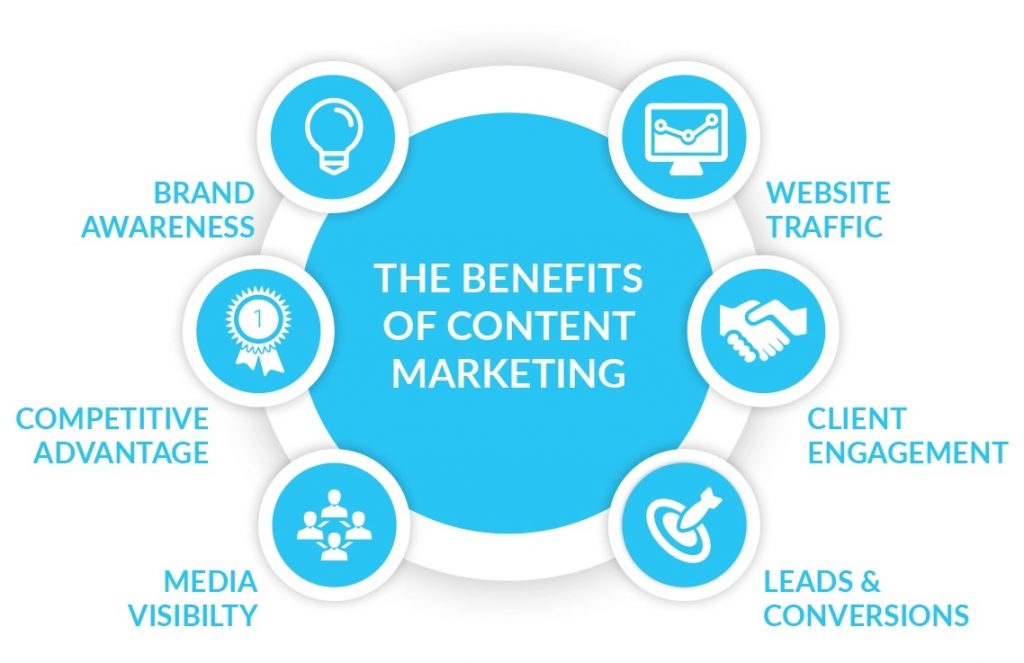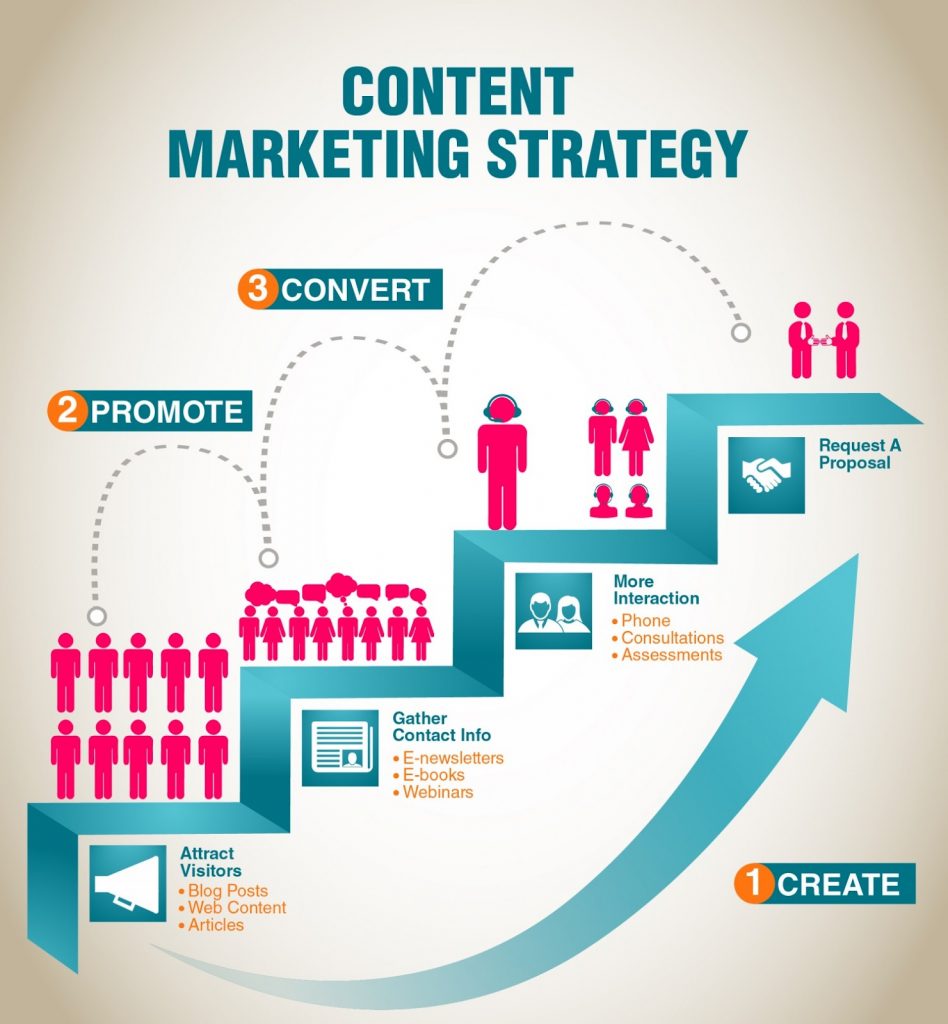28 Oct

Whatever you sell on your Shopify store doesn’t matter what actually matters is marketing strategies and content marketing is one of the most effective way. It is a huge opportunity to increase sales.
Once you create amazing engaging content your site traffic will automatically increase which will boost your revenue because customers will feel connected. And this connection can only be built with strong content marketing. Also, Optimized quality content ranks well on search engine results pages.
Content marketing is a great top-of-funnel strategy to grab your visitors the first time they come to your store and are still hanging in the awareness stage.
If you understand the way people buy, you can create content for each stage of the funnel to help move them toward buying.
Lots of people use a slightly different version of a sales funnel, but they all boil down to three basic stages:
- Awareness
- Consideration
- Decision
Each stage will require a different kind of content marketing.
What is Content Marketing?
If you run an e-commerce store, you’ll already know that the world is moving online. This means traditional marketing methods are much less effective than what they once were. Enter digital marketing.
Digital marketing is any form of marketing (such as ads, promotions, branded emails) that exists online. Content marketing refers to the creation and sharing of online “content.” It includes blog posts, videos, images, and social media posts, to name a few.
What Are The Benefits Of Content Marketing?

Content marketing has a whole bundle of benefits for Shopify e-commerce stores. Whatever your audience or budget is, you can use content to generate more leads and sales. The benefits of content marketing for e-commerce also include:
1. Cost-effectiveness: Content creation is either free or incredibly low-cost depending on the platforms you use. You may also decide to hire a content marketing professional or outsource to an agency.
2. Ease: Chances are you already know how to use social media. Blogging and posting on YouTube is also user-friendly. You’re not required to learn a whole new set of technical skills when you begin content marketing, and much of what you’ll do is intuitive.
3. Integration: Your blog and social media are easy to integrate into your Shopify store. Not only does this make it easier for your audience to find you, but it also helps you track your leads and sales. To do this, you can install a social media app like Instafeed or Flexify, or you can code social media buttons into any Shopify theme. If you don’t have any coding knowledge, you can either consult a Shopify help center tutorial or enlist the help of Shopify experts.
4. Direct sales: By posting content with links to your products or using affiliate marketing, it’s quick and easy for leads to become sales. You’ll want to track your conversion rates (meaning how many site visitors actually make sales) using Shopify analytics and reports. This way, you can adjust your content marketing strategy according to what’s working and what isn’t.
Area’s that needs to be focused

Promotional messages just don’t cut it these days. Today’s consumers are looking for value and insight from the brands they love. More specifically, these are the key areas you should focus on:
1. Social media marketing: Social media marketing is a core component of content marketing, but it doesn’t cover all the bases. You need to establish an authentic, consistent presence on your chosen platform(s) so you can engage with your audience.
2. SEO: Search engines reward businesses that publish consistently high-quality content. It means your Shopify page (and all content you post) needs to be well-written and optimized for SEO If you want to rank in search engines. If you’re not sure how to optimize your site, you can ask a Shopify developer to help.
3. PPC: PPC stands for pay-per-click marketing, and it’s a great way to increase traffic to your site. PPC means working with an affiliate (such as another brand or influencer) who will share links to your store. This method of marketing is highly cost-effective, as you only pay your affiliate when someone clicks their featured link and arrives at your site.
4. Inbound marketing: To increase inbound leads to your Shopify store, you should consider techniques such as guest blogging (writing posts for other sites in your niche with a link back to your store), vlogging (video blogging on YouTube), and sharing content on Pinterest and any other platforms.
How to Grow Your Shopify Store Using Content Marketing?

Craft Unique Content: Create something that stands out. You need to come up with a content plan. Determine what topics you will create content about, what form of content you will create and how you will put it out there.
Here are some ways you can generate content ideas:
- Listen to podcasts by people in the same niche as you.
- Check out what books are selling on Amazon that relate to your niche.
- Hang out in Facebook Groups related to your business, or start your own group!
- Ask your customers what they’d like to know more about.
According to a survey people share content for the following reasons:
- To grow and nourish their personal relationships with others
- To get the word out
- For a sense of self-fulfillment and to participate in the world
- To bring value and entertainment
- To define themselves
So if you want content that people will share, then keep those things in mind.
Huge Reach of Content: Make sure your content should have a huge reach. Once you are done with writing the content now it’s time to decide how you will deliver it to people. Some of the common ways are:
- Emails
- Directly on your e-commerce site
- Through social media
Amongst them e-mails is a great way to deliver any type of content. E-mail list and campaigns can drive repeat traffic back to your website by providing an incentive to return and by directly communicating on a regular basis.
Shopify’s email buy button also makes it simple for your customers to go straight to checkout when you email them an offer they want. Email marketing is 40 times more effective than marketing on Facebook and Twitter when it comes to generating sales because you get to take the conversation to your customer’s most personal online space: their inbox. Facebook and Twitter are great for engagement with your community, but they’re also noisy. Information can easily get lost on Facebook. Your emails, however, are there waiting when your audience open their inboxes.
Guest Posting: Another aspect of content marketing that brings value to your Shopify store is guest posting. If you’re just starting out, you need to reach out to sites that have more power in your field and have some authority. Non-paid guest blogging opportunities at this stage are more feasible and are a great way to get started with this content marketing strategy.
Once you get your brand name on one authority site, you are more likely to get more traffic to your Shopify store. By getting more guest posting opportunities, your content will reach a broader audience. This not only increases the traffic to your store but it also builds the reputation of your brand name.
Power of Video Content: Video can be embedded in your blogs to make them more engaging. Furthermore, most of your Shopify theme allows you to add a video on your product page. Video plays a big role in using your content to sell stories. Apart from telling stories with your videos, you can also use the medium to show your audience how to use your products and get the most out of them.
Use Social Media: When you have amazing content and you have to share it with people social media is also one of the biggest platforms to share your content. These platforms provide an extensive base of your target audience. Facebook alone is expected to host close to 1.7 billion users on its platform. With such a large number of people, you are assured of finding a considerable portion of your target audience on a single platform.
Uploading content on social media also allows you to interact with your customers regarding the content of your posts. This interaction creates a closer bond and also brings in new customers. On social media, audiences prefer graphic content compared to text.
Additionally, the viral nature of social media reduces your input in actively marketing your content. Video content merges well with the mechanics of social media. Once you post your content, your audience pushes it for you, achieving an even greater reach than you would get from other forms of promoting your content.
Conclusion
When you need to grow your online store, you have to do a lot more than choosing an appropriate Shopify theme. You need to craft unique content, incorporating storytelling techniques to make it compelling. Also, look for authority sites where you can present this content before a wider audience.
Creating high quality content will boost your traffic and sales. You also need to create it constantly. The more content you create regular, the better your e-commerce site will perform. With multiple channels you can get your content out to your ideal target audience.
